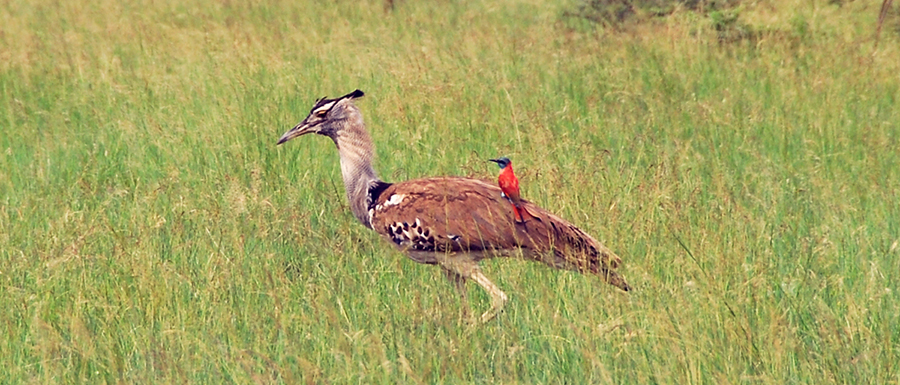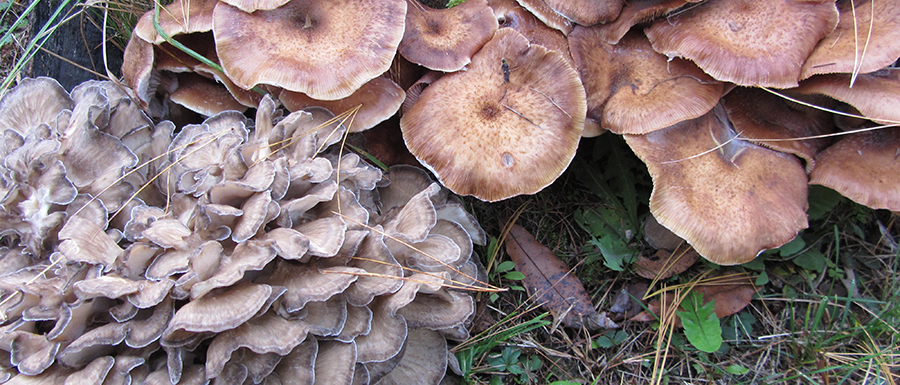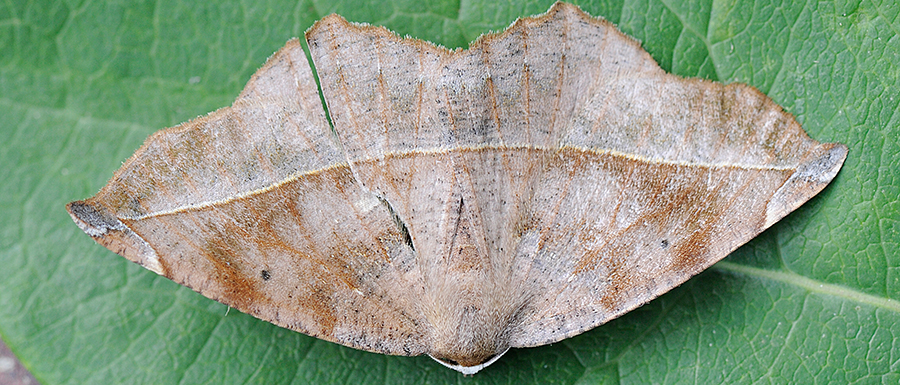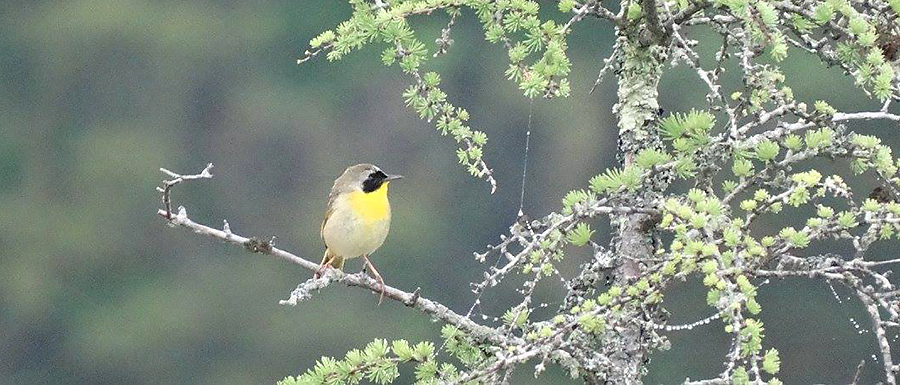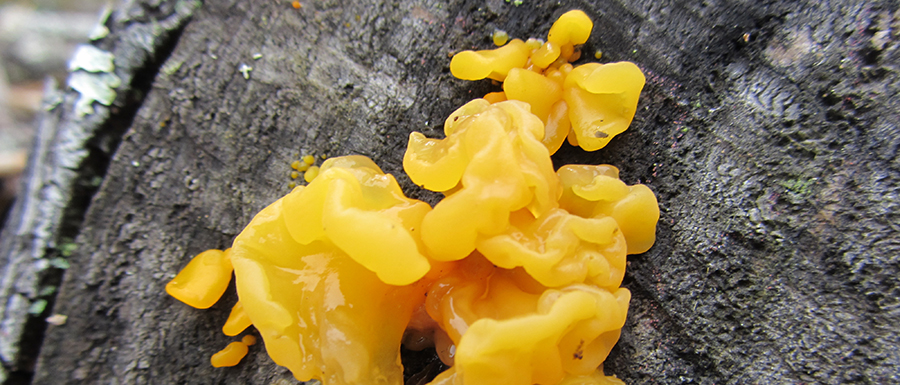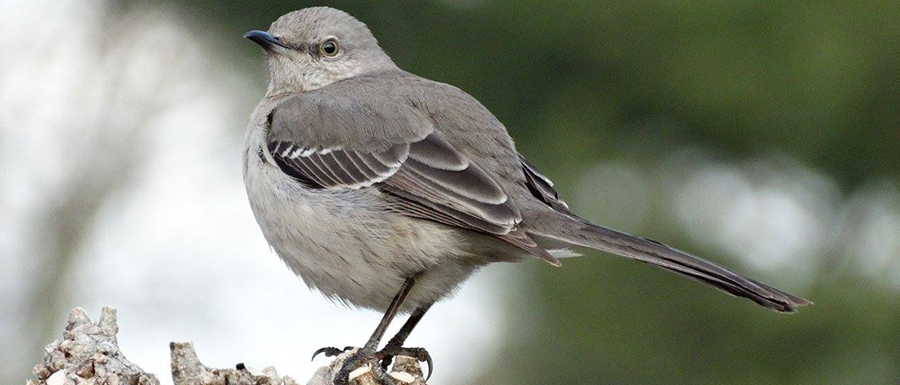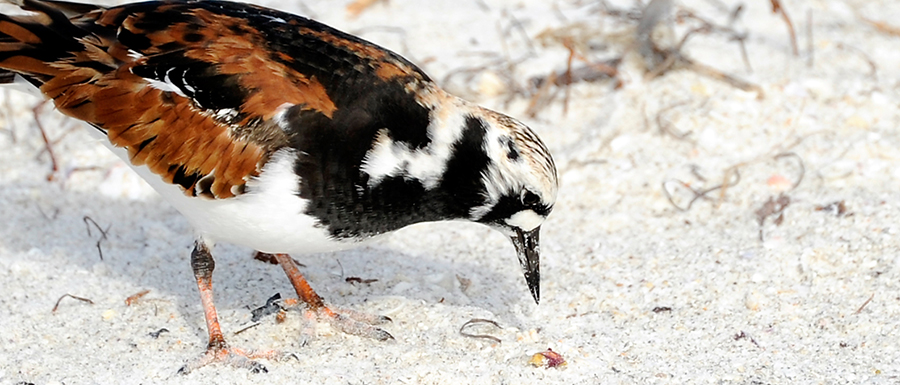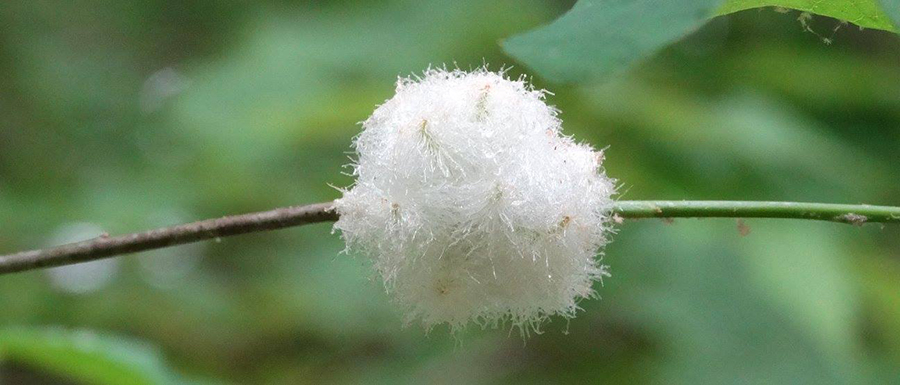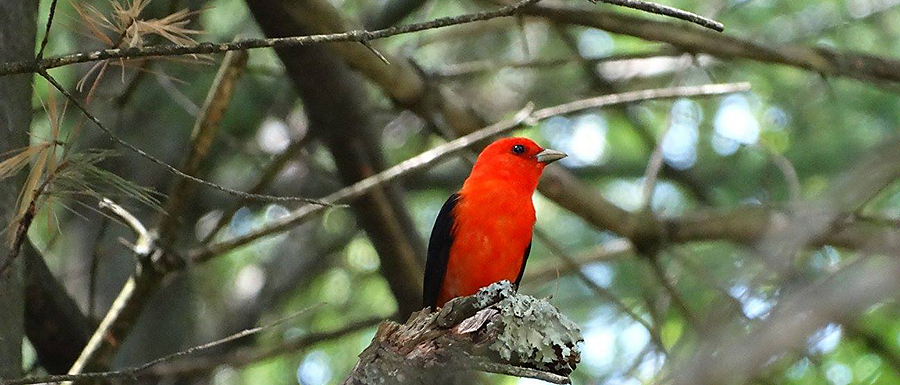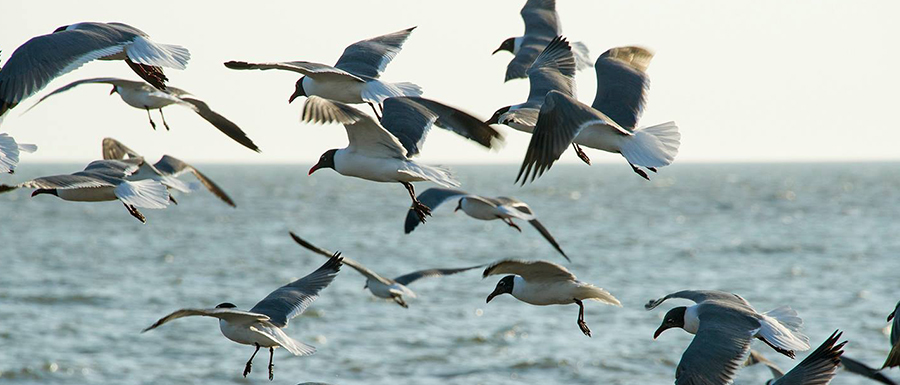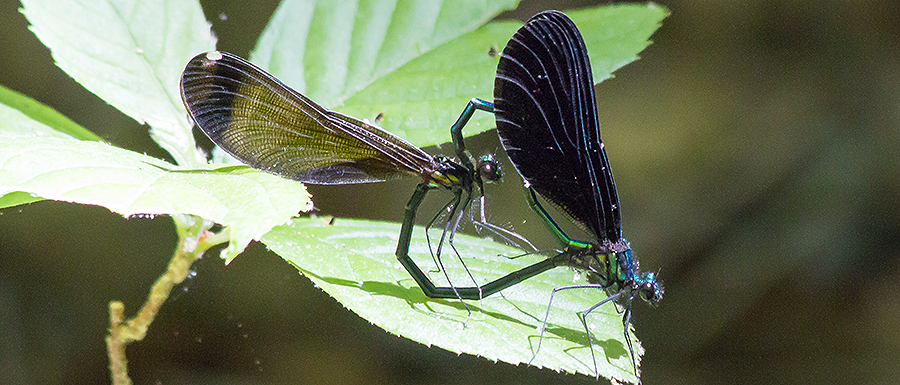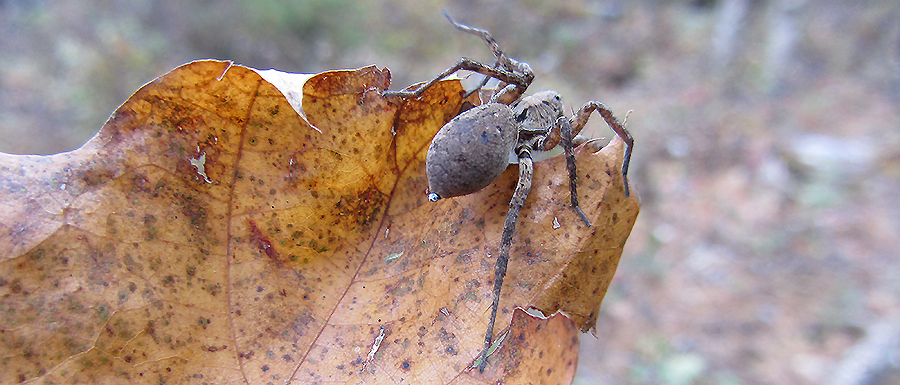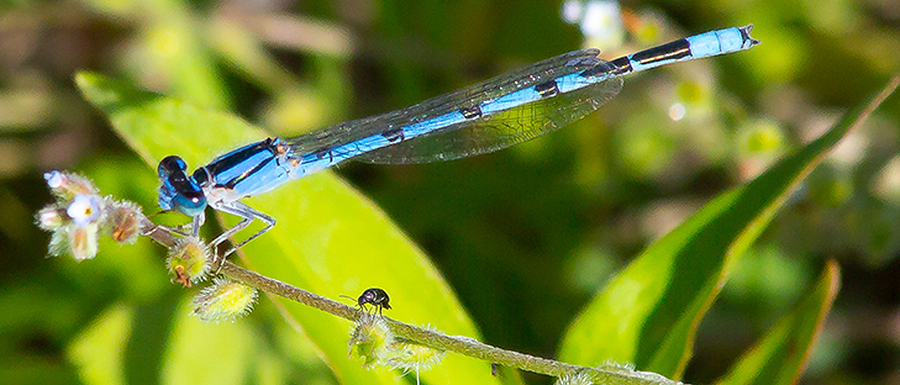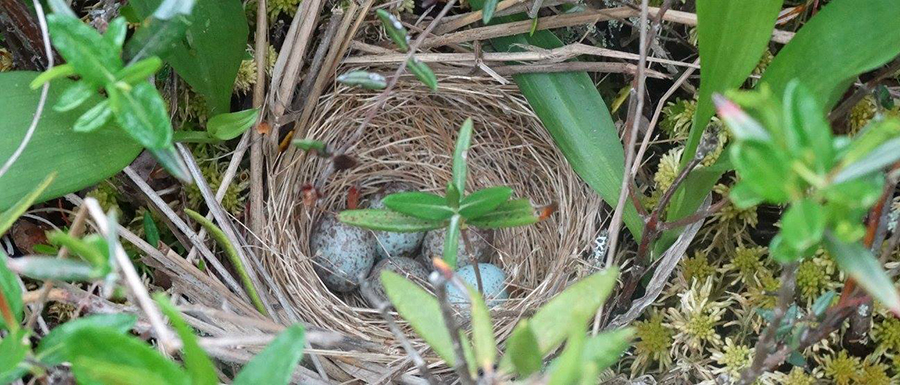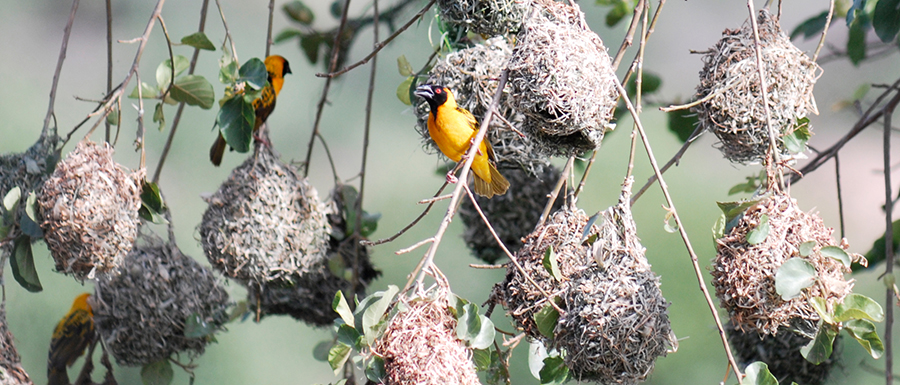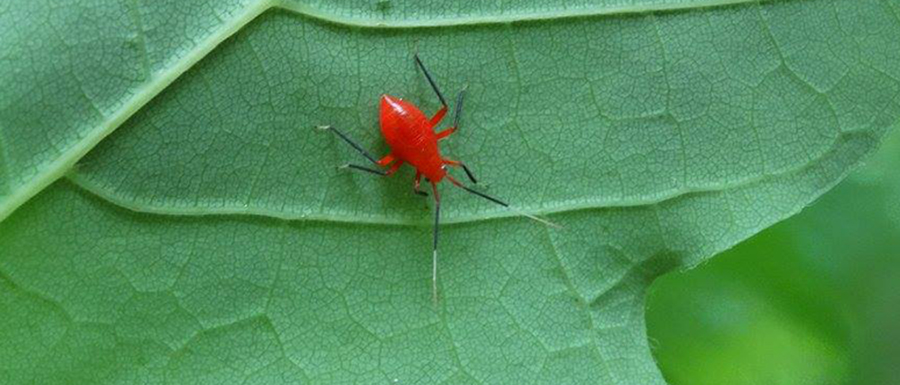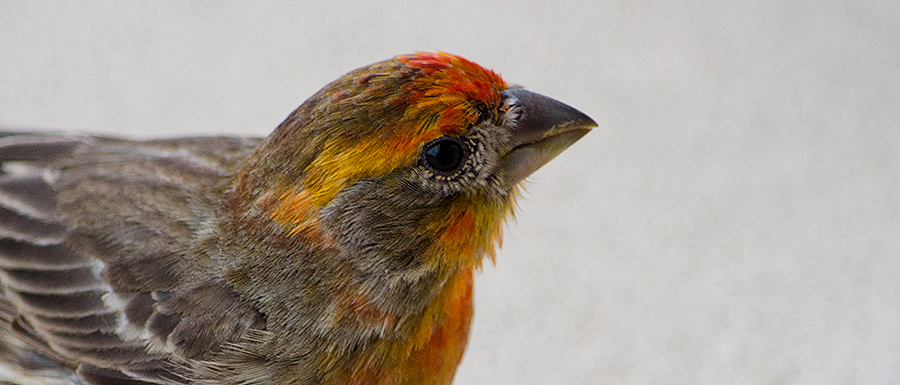Welcome! Our laboratory was established in the fall of 2009. Currently we are 16 researchers working on a broad range of topics including bird song, natural history, urban ecology and biodiversity, bird nest and skeletal evolution, African ethnobotany, social learning, public understanding of evolution, and cultural evolution.
News
- SEPTEMBER: Congratulations to Franny who has just published a paper in Animal Behaviour! This is Franny’s first lead-author publication. It was actually invited for Nature Communications, but the editor was incommunicative so we promptly moved on. Franny’s paper is the 45th lab member (student and postdoc) publication of the Lahti Lab.
- SEPTEMBER: Our former PhD student Mason, who left us for a postdoctoral position at Max Planck and is now at Stony Brook University, visited our lab and talked to us about some of his current research: “Language-like efficiency and structure in house finch song”. The discussion was engaging enough to have broken the record for the longest Lahti Lab meeting– 3 hours 17 minutes!
- SEPTEMBER: QC Biology and Comparative Literature student Andreas Paparousopoulos completed the extensive project of transferring environmental philosophy references from David’s Online Bibliography of Environmental Thought (OBET) to PhilPapers, the internet’s hub for philosophical literature. This project completes a 14-year curation of literature supported by the American Philosophical Association and the International Society for Environmental Ethics. We have now passed the torch. Thanks to Andreas, who is now the 35th most prolific volunteer for PhilPapers, having managed nearly 6000 entries.
- JUNE: We celebrated another year– our lab’s 13th! Congratulations to our graduates, especially Al!
- MAY: Here are the topics we discussed at our weekly “LLL” (LahtiLabLit) group meetings this term:
- Evolution of spices and our use of them in food
Deception
Mammal semelparity
The Bruce effect
Scientific progress slowing down
Religion and wellbeing
Human hairlessness
Plasticity-led evolution
The Flynn effect
Telomeres, cancer, and aging
- Evolution of spices and our use of them in food
- MAY: Our lab hosted a visit and dinner with our English Dept colleague Prof. Annmarie Drury, who spoke to us on Darwin and the relationship between evolution and literature (a topic Annmarie and David taught a new course on last spring)
- MAY: Our lab hosted a revitalization of the QC Departmental Social Hour after a long COVID hiatus.
- MAY: Franny and others in our lab hosted a Birding Big Day pledge drive in César‘s honor.
- APRIL: Our lab was visited (remotely) by Mary Jane West-Eberhard of the Smithsonian Tropical Research Institute and other friends for an engaging discussion on plasticity-led evolution
- MARCH: Sadly, we lost César Castillo to a sudden lung illness. He leaves behind Wendy and three young children. The Queens College Biology Community and other friends came forward with loving thoughts and memories of César.
- FEBRUARY: Congratulations to Maleha for publishing her Master’s research!
2022:
- Every term our lab has a weekly discussion of a topic in evolution, animal behavior, or sometimes other notable science. Here were the questions (each related to a couple of papers) that we discussed this term:
- Was birdsong sexier during COVID?
Do animals bear genetic evidence of rampant adaptation?
Have monkeys evolved to assume the world is logical?
Can religion be seen as arising out of kin selection?
Why do some female hummingbirds look like males?
How do fruit fly females use male songs to assess their quality?
How does humpback whale song change over time?
Do dolphins and bonobos use proper names?
Did an RNA-peptide world precede the origin of life?
Can we use neural activity to demonstrate consciousness in crows?
Can zebra finches identify dozens of individuals by song alone?
- Was birdsong sexier during COVID?
- DECEMBER: Congratulations to Al for defending his Master’s literature review: “What we know about the small Indian mongoose (Urva auropunctata), a globally introduced mammal”. Al continued where Aaron left off in his doctoral dissertation chapter on the subject.
- DECEMBER: Our lab hosted a visit and dinner with our colleague Prof. John Waldman, who gave us a lecture on his recent book, Running Silver: Restoring Atlantic Rivers And Their Great Fish Migrations.
- OCTOBER: Franny presented to the lab on moth natural history and identification.
- SEPTEMBER: Ed Rodgers of the Delaware Riverkeeper Network interviewed Bobby, Angelinna, and David at Soundview Park about the Bronx River Urban Ecology Project.
- SEPTEMBER: Our lab hosted (remotely) a QC Biology colloquium lecture by Dustin Rubenstein of Columbia university, who spoke on “The ecology of cooperative breeding behavior”.
- SEPTEMBER: Leora Ferrari as a new Master’s student in our lab! Leora is a great field naturalist with lots of interesting experiences, and worked with our friend Patty Brennan at Mount Holyoke College. Leora will work on the house finch cultural evolution project.
- AUGUST: In another big trip this summer, our lab went up to Montreal to attend the Ecological Society of America annual meeting, and then made our way slowly back touring through the Adirondack Region, including Lake Placid, Paul Smith’s College Interpretive Center, the Wild Center, the SUNY ESF Adirondack Interpretive Center, Lake George, Goodnow Mountain, and the Saratoga Springs fossil beds. Those who came were Bobby, Andy, Franny, Maleha, Ritika, Oditi, Angelinna, Catalina, Shari, David, and Eva. At the conference we gave six presentations:
- D. Lahti. Rapid evolution of the small Indian mongoose (Urva auropunctata) in introduced populations on tropical islands.
- M. Mahmud, D. Lahti, and B. Habig. A longitudinal assessment of benthic macroinvertebrate diversity and water quality along the Bronx River.
- R. Nath, D. Lahti, and B. Habig. A survey of mammalian diversity along the Bronx River.
- A. Bradfield, C. Nagy, M. Weckel, D. Lahti, and B. Habig. Predictors of coyote and free-ranging cat occupancy and detection probability in the New York metropolitan area
- B. Habig, A. Bradfield, C. Nagy, M. Weckel, and D. Lahti. Predictors of mammalian diversity in the New York metropolitan area.
- C. Morrill and D. Lahti. Diversity of riparian macrofungi along an urban-suburban gradient.
- JULY: Congratulations to Angelinna for publishing her Master’s research! This is based on the first chapter of Angelinna’s Master’s Thesis, which she defended just this Spring. This is the second publication in the Bronx River Urban Ecology project spearheaded by Bobby, following Amanda‘s last year.
- JUNE: Several of us (Danielle, Shari, Amanda, Bobby, and David) went to Puerto Rico for the American Ornithologists’ Society annual meeting. We had fun at the conference, birding, going on field trips, and spending time with our weaverbird collaborator Jackie Childers! We gave five presentations:
- B. Habig, J. L. Childers, and D. C. Lahti. The evolution of nest design and reproductive behavior in Ploceidae weaverbirds.
- J. L. Childers, B. Habig, R. C. K. Bowie, et al. Weaving nature’s baskets: Bill morphology and the evolution of nest design in weavers (Ploceidae).
- D. C. Lahti. Recent discoveries in the development and cultural evolution of house finch song.
- A. J. Goldstein, D. C. Lahti, and B. Habig. Avian diversity and land use along the Bronx River.
- D. S. Wasserman and D. C. Lahti. Examining phylogenetic signal of the tongue skeleton in Hawaiian honeycreepers (Drepanidinae)
- MAY: Our lab joined the rest of CUNY EEB at a retreat at the New York Botanical Garden– a beauful day!
- MAY: Our lab celebrated the end of another school year– our 12th– Congratulations to our graduates, especially Angelinna!
- APRIL: Congratulations to Angelinna for defending her Master’s thesis! “Predictors of mammalian diversity and coyote and free-ranging cat distribution in the New York metropolitan area.”
Bobby collaborated with Angelinna on her two studies, which are also now a product of the Gotham Coyote Project, with Chris Nagy and Mark Weckel also collaborating on this research venture. - MARCH: Our lab (remotely) hosted Darcy Kelley, neurobiologist of social communication and the Harold Weintraub Professor of Biological Sciences at Columbia University. Darcy spoke at our departmental colloquium on “Underwater songs”— in Xenopus frogs that is.
- MARCH: Amanda has published her Master’s research on bird diversity. This is the lab’s second Master’s thesis to become a peer-reviewed journal article (after Johanna). It is also the first publication of the Bronx River Urban Ecology Project that Bobby has been spearheading since 2019:
- MARCH: Mason has published another journal article– his seventh (!)– completing the publication of his doctoral dissertation. Shari and Andrea aided with preanalysis of the house finch song.
- Mason P. Youngblood & David C. Lahti. 2022. Content bias in the cultural evolution of house finch song. Animal Behaviour 185:37-48.
- Mason P. Youngblood & David C. Lahti. 2022. Content bias in the cultural evolution of house finch song. Animal Behaviour 185:37-48.
- FEBRUARY: Our lab went out to Jade restaurant in Queens for dinner, one of our favorite spots. We especially wanted to celebrate Shari‘s having defeated cancer over the last year!
2021:
- NOVEMBER: Bobby has published a paper on broadening participation in science. This study contributes to his outreach goals for his NSF Postdoctoral Fellowship, which comes to a close this year. Maleha also helped with this project. This is the sixth of Bobby’s published papers on science education.
- Bobby Habig & Preeti Gupta. 2021. Authentic STEM research, practices of science, and interest development in an informal science education program. International Journal of STEM Education 8:57. doi:10.1186/s40594-021-00314-y.
- Bobby Habig & Preeti Gupta. 2021. Authentic STEM research, practices of science, and interest development in an informal science education program. International Journal of STEM Education 8:57. doi:10.1186/s40594-021-00314-y.
- AUGUST: Congratulations to Bobby, who has taken a tenure-track faculty position in Biology at Mercy College! Bobby is one of the longest-standing members of our lab, having performed research with us since 2011 when he was a second baccalaureate student. After receiving his PhD at Notre Dame, Bobby returned to the lab on an NSF postdoctoral fellowship for the last three years. Bobby will continue to collaborate closely with our lab, such as with DL (and Jackie Childers) on the evolution of weaver nests, and advising QC Master’s students on the Bronx River Urban Ecology Project.
- AUGUST: Congratulations to Maleha, who has defended her Master’s thesis, “A longitudinal assessment of benthic macroinvertebrate diversity and water quality along the Bronx River”.
- This is the second thesis to emerge from Bobby‘s Bronx River Urban Ecology Project.
- Maleha has been admitted to the CUNY Anthropology Doctoral Program. Beginning this fall she will be working on nonhuman primates (she hopes in her native Bangladesh!) with Prof. Shahrina Chowdhury at Brooklyn College.
- Maleha was our third lab manager from 2019-2021– all thanks to her for all her support and keeping the lab together during this very unusual and difficult time, between DL’s sabbatical and then COVID!
- JULY: Congratulations to Ash for defending her doctoral dissertation, Vertebrate Scavenger Diversity and Ecosystem Services along an Elevational Gradient in Central Nepal. Ash worked with Prof. José Anadón, but became active in our lab when José left QC and took a position in Spain.
- JUNE: Mason published the results of a collaborative study that forms the next installment of his research into the cultural evolution of electronic music:
- Mason Youngblood, Karim Baraghith, & Patrick E. Savage. 2021. Phylogenetic reconstruction of the cultural evolution of electronic music via dynamic community detection (1975–1999). Evolution and Human Behavior. doi.org/10.1016/j.evolhumbehav.2021.06.002.
- Mason Youngblood, Karim Baraghith, & Patrick E. Savage. 2021. Phylogenetic reconstruction of the cultural evolution of electronic music via dynamic community detection (1975–1999). Evolution and Human Behavior. doi.org/10.1016/j.evolhumbehav.2021.06.002.
- JUNE: The Bronx River Project team, led by Bobby, met at DL’s house for a second project meeting and symposium / update / hangout session.
- MAY: Congratulations to Elliot for a publication based on another chapter of his dissertation!
- MAY: We were happy to welcome our collaborator and fellow weaverbird enthusiast Jackie Childers to the lab (remotely). Jackie is a doctoral student at the University of California at Berkeley, and is working with Bobby on the phylogeny, evolution, and function of weaver nests.
- MAY: Congratulations to Angelinna for her Macaulay Honors Thesis, entitled “Predictors of mammalian diversity, coyote cccupancy, and coyote detection probability in the New York metropolitan area”.
- Angelinna worked with Bobby on this project, in cooperation with the Gotham Coyote Project.
- For this thesis, Angelinna won the Laura H. and Arthur L. Colwin Prize, for excellence in undergraduate research among graduating QC Biology Majors.
- Angelinna has also been admitted to the QC Master’s program in Biology, where she plans to continue her research on coyotes and other mammals in NYC.
- MAY: Congratulations to our graduates in this tumultuous year, including Joderick, Angelinna, Cristina, Macarena, Amanda, and Mason!
- APRIL: Congratulations to Mason, who defended his doctoral thesis, From Psychology to Phylogeny: Bridging Levels of Analysis in Cultural Evolution, becoming our lab’s fifth Ph.D. recipient, and our first in Psychology. Mason has secured a postdoctoral position at the Max Planck Institute for the Science of Human History in Jena, Germany, where he will continue his studies of cultural evolution.
- MARCH: Alexis was interviewed for Priya Shelly’s From the Field podcast, in an episode entitled “Who’s Eating What? Learning About Urban and Scavenger Ecology and How Humans Affect Biodiversity with Alexis Brewer “. Hear it here: https://podcasts.apple.com/us/podcast/from-the-field/id1460029661
- MARCH: Catalina received an award from the Seymour Fogel Endowment Fund for Genetic and Genomic Reserach, for her Master’s research project on macrofungal diversity along the Bronx River. In this Catalina will also be collaborating with Seth Wollney.
- MARCH: We hosted Stacy Rosenbaum, biological anthropologist at the University of Michigan. Stacy spoke at our Departmental Colloquium on “The relationships among early life experiences, social bonds, & adult health in wild savannah baboons”. Stacy also joined us for an engaging discussion with the lab at a lunch meeting.
- JANUARY: We hosted Stanley Gehrt, wildlife biologist at the Ohio State University. Stan spoke at our Departmental Colloquium on “Extreme urban ecology of an apex predator: coyotes in Chicago”. A couple of days later we had an interesting discussion with the lab at a lunch meeting.
- JANUARY: Congratulations to Amanda, who defended her Master’s thesis, “Predictors of avian diversity along the Bronx River”. This is the first thesis to proceed from Bobby‘s Bronx River Urban Ecology Project.
- JANUARY: Ritika received a grant from Sigma Xi, the Scientific Research Society, to continue her research on mammals with Bobby as part of the Bronx River Project.
2020:
This year was beset of course with the COVID-19 pandemic. Nearly all meetings and hostings were online, and most of our research activities were remote. Field work was still conducted in person by the Bronx River Project team, under Bobby‘s leadership. We are particularly impressed by and congratulate the teachers and graduate student instructors in our lab, and those who were able to make major progress on their research, analysis, and publications during this time. We also thank our undergraduate researchers Ratna and Joderick, who have been working respectively as an EMT and in a hospital during the pandemic, and have been tending to the sick and contributing to saving lives throughout this time.
- DECEMBER: We hosted Kurt Heim, fisheries biologist from Stony Brook University. Kurt spoke to our Departmental Colloquium (at the invitation of John Waldman) on “Adventures in applied fish movement ecology: Translating science to management”.
- DECEMBER: We hosted Bret Weinstein, an evolutionary theorist, and old friend and labmate of DL, and now a public figure and author of the DarkHorse podcast in collaboration with Heather Heying. Bret spoke to our Departmental Colloquium on “Evolution in the 21st century: How can we upgrade Darwinism?”.
- DECEMBER: Ar published an article based on the Honors Thesis she wrote in our lab, forming the first published demonstration of female song in the house finch. Mason collaborated with Ar on the analysis:
- Ar Kornreich, Mason P. Youngblood, Paul C. Mundinger, & David C. Lahti. 2021. Female song can be as long and complex as male song in the house finch (Haemorhous mexicanus). Wilson Journal of Ornithology 132:840–849. doi.org/10.1676/19-00126.
- Ar Kornreich, Mason P. Youngblood, Paul C. Mundinger, & David C. Lahti. 2021. Female song can be as long and complex as male song in the house finch (Haemorhous mexicanus). Wilson Journal of Ornithology 132:840–849. doi.org/10.1676/19-00126.
- NOVEMBER: We hosted Meredith Doellman, an evolutionary genomicist at the University of Chicago. Meredith spoke at our Departmental Colloquium on “From flies to butterflies: the role of genome structure in adaptation and speciation”.
- NOVEMBER: We hosted Rindy Anderson, a behavioral ecologist at Florida Atlantic University. Rindy spoke at our Departmental Colloquium on “Bird songs and bird brains: the evolution of elaborate and reliable animal
communication signals”. Rindy also joined our lab for a fun and insightful lunch meeting. - OCTOBER: The Bronx River Urban Ecology Project team met at DL’s house (yes, in person believe it or not!) for a project meeting and symposium. The full team includes Bobby (the project director), Amanda, Maleha, Ritika, Sal, Angelinna, and (as of this meeting!) Catalina.
- OCTOBER: We hosted Joan Strassmann, evolutionary biologist of cooperation at Washington University in St. Louis. Joan spoke at our Departmental Colloquium on “Kin selection, relatedness, and conflict in the social amoeba Dictyostelium discoideum.”
- SEPTEMBER: We hosted Robert Trivers, arguably the most important living evolutionary biologist, particularly for work he performed in the 1970s. Bob spoke at our Departmental Colloquium on “The evolutionary logic of honor killings & other atrocities including powerful psychopaths”. Bob’s topic, his rhetoric, and offhand speculative presentation offended some; and some also objected to his past behavior. In response, DL followed up the session by hosting two open Town Hall type meetings, mainly expressing sympathy for student concerns, and assuring the attendees that neither evolutionary biology as a whole nor Queens College and its Biology Department validate or condone xenophobia, Islamophobia, or callousness towards any particular religious, ethnic, or other people groups.
- SEPTEMBER: We hosted Beth Archie, behavioral ecologist from Notre Dame and Bobby’s erstwhile doctoral supervisor. Beth spoke at our Departmental Colloquium on “Long-term perspectives on ecology and life history in the Amboseli baboons”. She also joined us for an engaging lab lunch meeting online.
- AUGUST: Congratulations to our lab’s two new Masters of Biology!
- Cristina defended her literature review “A review of teaching in human and nonhuman animals”
- Macarena defended her research thesis “Relationship between personality and cognitive traits in domestic rabbits (Oryctolagus cuniculus)”
- JULY: Mason published an article he wrote about cultural features of extremist radicalization:
- Mason Youngblood. 2020. Extremist ideology as a complex contagion: the spread of far-right radicalization in the United States between 2005 and 2017. Humanities and Social Sciences Communications 7:49 (10pp.). DOI:10.1057/s41599-020-00546-3
- Mason Youngblood. 2020. Extremist ideology as a complex contagion: the spread of far-right radicalization in the United States between 2005 and 2017. Humanities and Social Sciences Communications 7:49 (10pp.). DOI:10.1057/s41599-020-00546-3
- JULY: Mason was interviewed for a New York Times article on bird song cultural evolution that has recently come out in Current Biology.
- JUNE: Mason published a Sludge article with Andy Friedman describing police spending and arguing for decreased funding for “traditional policing”.
- MAY: Congratulations to our 2020 graduates, including Andrea, Arya, and Catalina! We’re sorry we couldn’t celebrate with you in person yet, but will do this soon!
- MAY: Mason published a technical report on a method he developed for his house finch study. Shari and Andrea helped with the fieldwork this engendered.
- Mason P. Youngblood. 2020. A Raspberry Pi-based, RFID-equipped birdfeeder for the remote monitoring of wild bird populations, Ringing & Migration. DOI: 10.1080/03078698.2019.1759908.
- Mason P. Youngblood. 2020. A Raspberry Pi-based, RFID-equipped birdfeeder for the remote monitoring of wild bird populations, Ringing & Migration. DOI: 10.1080/03078698.2019.1759908.
- FEBRUARY: Dan published a paper on heterospecific song learning from his doctoral dissertation in linguistics:
- (2020) House finches learn canary trills, Bioacoustics, DOI: 10.1080/09524622.2020.1718551
- (2020) House finches learn canary trills, Bioacoustics, DOI: 10.1080/09524622.2020.1718551
- FEBRUARY: Aaron published the main results paper from his doctoral dissertation, showing, as the title says…
- M. Aaron Owen & David C. Lahti. 2020. Rapid evolution by sexual selection in an invasive mammal. Evolution. https://doi.org/10.1111/evo.13934.
- M. Aaron Owen & David C. Lahti. 2020. Rapid evolution by sexual selection in an invasive mammal. Evolution. https://doi.org/10.1111/evo.13934.
- JANUARY: Bobby is now a research scientist for Gotham Coyote, and Ritika is a student researcher on the project. Their profiles are on the Gotham Coyote website: http://www.gothamcoyote.com/our-team.html
2019
This year I was on sabbatical– 404 days, from December 21, 2018 to January 27, 2020! Thanks very much to Bobby, who expertly ran the lab in my absence. Here are highlights and events from the year:
- First of all, welcome to our new lab members! In 2019 Oditi Debi, Ratna Kanhai, Andrea Lopez, Ritika Nath, Christina Takos, and Catalina Tapia all joined the lab. Each will be working on either the Bronx River Urban Ecology Project or the House Finch Cultural Evolution Project.
- Maleha is mentoring Melanie Chuu, a high school student from the Bronx High School of Science, in research in the lab.
- Danielle has received another grant from the John S. Hilson Family Fund to complete her study and scanning of specimens and conduct quantitative analysis of hyoids and crania in Hawaiian honeycreepers.
- Bobby continued under his NSF postdoctoral grant, and conducted a field research expedition to Awash National Park in Ethiopia, where he surveyed the weaverbirds and studied their nest ecology and evolution. Longtime lab friend Dr. Noah Burg (of CUNY and then Southern Oregon University) accompanied Bobby as a research associate.
- Jasmin joined Bobby in Ethiopia, helped with the Awash weaver survey and also conducted a study of weaver nesting associations with other species.
- Bobby also conducted collections research (collecting data for quantitative analyses of weaverbird nest architectures) at the wonderful Western Foundation of Vertebrate Zoology in Camarillo, California. Thanks as always to Linnea Hall and René Corado for their aid and hospitality.
- Bobby also started up a major domestic research initiative: the Bronx River Urban Ecology Project. Bobby and four Master’s students commenced complementary projects along the Bronx River between NYC and White Plains:
- Ritika is studying patterns of mammalian diversity, assessing how apex predators and features of the urban landscape shape patterns of community composition
- Sal is studying patterns of floristic diversity, analyzing how differences in urban landscape features contribute to phylogenetic, taxonomic, and functional diversity
- Amanda is studying patterns of avian diversity, measuring the impact of urbanization and anthropogenic disturbance on avian community composition
- Maleha is surveying aquatic macroinvertebrates, leveraging historical and current data to assess longitudinal changes in species richness and water quality over the past twenty years
- Congratulations to this year’s QC graduates, including Ar, Oditi, Ritika, and Shari!
- Ar had an immensely successful final year in our lab:
- received this year’s Laura A. & Arthur L. Colwin Prize, which is awarded to the QC Biology Department’s top undergraduate researcher in the graduating class.
- successfully defended an undergraduate Honors Thesis, entitled “Female song can be as long and complex as male song in wild house finches (Haemorhous mexicanus)”.
- revised and submitted a first-authored paper for publication based on the above honors thesis shortly after graduation– by far the quickest undergrad in the history of the lab to do so.
- graduated summa cum laude with a BA in the Honors Program in Mathematics and Natural Sciences.
- entered Fordham University as a Biology doctoral student (right out of undergrad!), with a University Fellowship, working in the lab of J. Alan Clark.
- Mason continued his studies of cultural evolution, this year writing and speaking extensively on both his house finch and human music model systems:
- Youngblood, M. (2019). Conformity bias in the cultural transmission of music sampling traditions. Royal Society Open Science, 6(9).
- Youngblood, M. (2019). Cultural transmission modes of music sampling traditions remain stable despite delocalization in the digital age. PLoS ONE, 14(2).
- Youngblood, M. (2019, June). A study of collaborative sampling across international networks. Red Bull Music Academy Daily.
- Mason’s studies of cultural evolution of both house finch song and human music have been featured in several places: the Queens Daily Eagle, Q View, The Graduate Center News page, blogs (Cosmos, Phys.Org), and podcasts (Parsing Science, The Life Plot). Some of these include interviews with Mason. For links to this media coverage and more information about Mason’s research, writings, and art, see his new webpage: http://masonyoungblood.com/
- Our first PhD alumnus Elliot (’15) published another paper from his dissertation on cultural evolution:
- Jon-And, Anna & Elliot Aguilar. 2019. A model of contact-induced language change: testing the role of second language speakers in the evolution of Mozambican Portuguese. PloS ONE 14(4):e0212303 (14pp.).
- Jon-And, Anna & Elliot Aguilar. 2019. A model of contact-induced language change: testing the role of second language speakers in the evolution of Mozambican Portuguese. PloS ONE 14(4):e0212303 (14pp.).
- Khaleda, erstwhile lab manager, researcher, and one of the founding members of the lab, has published her study of behavioral time budgets of the village weavers in Ethiopia’s Awash National Park. This was the first major new project initiated in the Lahti lab nearly a decade ago, and includes over 800,000 discrete time points of data. Bobby contributed to the data analysis and interpretation following Khaleda’s return from Awash, and took the lead on the females particularly.
- Bobby Habig, Khaleda Khan, & David C. Lahti. 2019. Behavioural analysis of village weavers Ploceus cucullatus in an Ethiopian breeding colony during early incubation: 1. Females. Ostrich: Journal of African Ornithology 90:223-231.
- Khaleda Khan, Bobby Habig, & David C. Lahti. 2019. Behavioural analysis of village weavers Ploceus cucullatus in an Ethiopian breeding colony during early incubation: 2. Males. Ostrich: Journal of African Ornithology 90:233-239.
- Michelle, our lab manager since Fall 2016, has left us for veterinary school at St. George’s University, Grenada. Doing what she always wanted. Thanks for your service, Michelle! Our senior lab members have voted unanimously for Maleha to be the new lab manager, and she has graciously accepted. Our lab manager has retired. Long live the lab manager!
- Both Danielle and Mason passed their 2nd doctoral exams (in Biology and Psychology respectively), so both are now officially candidates for the PhD. Danielle’s research proposal, which encompasses her entire dissertation, is “Hyoid evolution in Hawaiian honeycreepers”. Mason’s proposal, which covers only the last of his dissertation projects/chapters, is “Transmission bias in the cultural evolution of house finch song”.
- Maleha was awarded a Merlyn Climate Change Grant for her work on the Bronx River Urban Ecology Project
- Wendy received several awards and honors for her educational activities:
- Whole Kids Foundation Garden Grant
- grant from Donors Choose for supplies for a community garden
- grant to attend the International Technology and Engineering Educators Association (ITEEA) Conference
- National Geographic Educator Certification
- Bobby published two papers from his research on baboons in Kenya, while he was a doctoral student based in the Archie lab at Notre Dame:
- Bobby Habig, David Jansen, Mercy Akinyi, Laurence Gesquiere, Susan Alberts, & Elizabeth Archie. 2019. Multi-scale predictors of parasite risk in wild male savanna baboons (Papio cynocephalus). Behavioral Ecology and Sociobiology. 73. 10.1007/s00265-019-2748-y.
- Mercy Akinyi, David Jansen, Bobby Habig, Laurence Gesquiere, Susan Alberts, & Elizabeth Archie. 2019. Costs and drivers of helminth parasite infection in wild female baboons. Journal of Animal Ecology. 88. 10.1111/1365-2656.12994.
- Congratulations to Ritika, Catalina, and Shari, who were accepted and matriculated into the QC Biology Master’s program.
- Chenghui, lab PhD alumna (’15) published a paper based on a chapter of her dissertation, in collaboration with Franny who conducted the field research. This is the first major publication to come out of the House Finch Cultural Evolution Project, which started when Franny and Chenghui entered the lab in 2011. This also represents the first publication in collaboration with the late Paul Mundinger that utilizes his historical house finch recordings.
- Chenghui Ju, Frances C. Geller, Paul C. Mundinger, & David C. Lahti. 2019. Four decades of cultural evolution in house finch songs. Auk: Ornithological Advances 136:1-18.
- Chenghui Ju, Frances C. Geller, Paul C. Mundinger, & David C. Lahti. 2019. Four decades of cultural evolution in house finch songs. Auk: Ornithological Advances 136:1-18.
- Bobby ran the Queens College Biology Department Colloquium series in the Fall term, inviting and hosting a great array of speakers. Here is the Fall 2019 Colloquium Schedule. Bobby also ran lab meetings throughout the year, and invited outside speakers for several of these events as well. Here were our distinguished academic visitors in 2019, in order of appearance. Also listed are the excellent Queens restaurants that concluded the visits, as these represent a good deal of scoping on Bobby’s part!
- Carol Henger, a PhD candidate at Fordham University and the recipient of a Master’s from Hunter College, presented her research on the population genetics of coyotes in NYC. The lab took her to Blend on the Water in Long Island City.
- George Jackman, a CUNY (Queens College) PhD and currently Habitat Restoration Manager at Riverkeeper Inc., presented his research on fish consrvation. The lab took him too Mira Sushi.
- Alexis Brewer, a CUNY EEB PhD candidate working with José Anadón, gave two research presentations to our lab on scavenger community ecology. One talk was entitled “The response of the vertebrate scavenger community to urbanization follows the intermediate disturbance hypothesis”, and the other “Turkey vultures modify foraging strategies in response to anthropogenic food subsidies”. The lab took her to Jade Eatery & Lounge, and Sagar Chinese.
- Noah Burg, a CUNY EEB PhD and then lecturer at Southern Oregon University, an evolutionary biologist and ornithologist, gave two presentations, one to our Department and one specifically to our lab. The first was on the genetics of introduced populations, and the second was based on the research he conducted in collaboration with Bobby at Awash National Park in Ethiopia. The lab took him to Mira Sushi.
- Aishwarya Bhattacharjee. a CUNY EEB PhD candidate working with José Anadón, presented her research on the interface between humans and scavengers in Nepal. The lab took her to Masala Box.
- Jasmin Alim, a QC Master’s student working with Mitch Baker, presented her research on agricultural pests. Her talk was entitled “Dill seed oil as a natural synergist of organic pesticides to control potato pests”. The lab took her to Mira Sushi.
- Catherine Markham, a behavioral ecologist and primatologist and Asst. Prof. of Anthropology at Stony Brook University, gave two presentations, one to our Department and one to our lab in particular. The first was entitled “Primate societies: competition within and between social groups”. The second was based on her research trajectory, entitled “One open door to the next: launching a career with a lot of luck and a little stubbornness”. The lab took her to Jade Eatery and Lounge.
- Dina Lipkind, a neuroscientist and behavioral biologist, who was a psotdoctoral researcher at Hunter College and is now an Asst. Prof. of Biology at York College, gave two presentations. She spoke to our department on “Learning complex behavioral sequences by trial and error: lessons from bird song”; then she spoke to our lab about her research trajectory. The lab took her to Joe’s Shanghai restaurant.
- Juliette Gorson, a recent CUNY EEB PhD and now Asst. Prof. of Biology at Hofstra University, presented her research in a talk titled “The transformative power of venom in evolution and biomedical applications”.
- Cheryl Hayashi, Professor and Director of Comparative Biology Research at the American Museum of Natural History, was previously a professor at University of California Riverside, and received a MacArthur Fellowship. Cheryl presented her research on the evolutionary and functional genomics of spider silk.
2018:
- DECEMBER: Michelle completed curation of a raft of new material for the academic tribute website to Richard D. Alexander. As RDA passed away in August, this material is a timely addition to the repository, and completes a major objective of the site: to make all of RDA’s professional papers available to the public in one place.
- NOVEMBER: Bobby was the invited speaker for the QC Biology Department Colloquium. Bobby spoke on part of his dissertation research: “Multi-Scale Predictors of Parasitism in Wild Male and Female Savanna Baboons (Papio cynocephalus)”.
- NOVEMBER: Mason received a mini-grant from the Queens College Department of Biology for his cultural evolution research.
- OCTOBER: Dan successfully defended his PhD dissertation! He returns to the University of Vienna after a short stay here in the U.S.
- Daniel C. Mann. 2019. Stabilizing Forces in Acoustic Cultural Evolution: Comparing Humans and Birds. PhD dissertation, City University of New York, Doctoral Program in Linguistics. New York, NY. 206 + xvi pp.
- Daniel C. Mann. 2019. Stabilizing Forces in Acoustic Cultural Evolution: Comparing Humans and Birds. PhD dissertation, City University of New York, Doctoral Program in Linguistics. New York, NY. 206 + xvi pp.
- OCTOBER: Mason published his first peer-reviewed journal article, and the first paper in our lab explicitly on cultural evolution. Palgrave Communications is a new Nature journal dedicated to new work in the humanities and the social and behavioral sciences:
- Mason P. Youngblood & David C. Lahti. 2018. A bibliometric analysis of the interdisciplinary field of cultural evolution. Palgrave Communications 4:120, 1-9.
- Mason P. Youngblood & David C. Lahti. 2018. A bibliometric analysis of the interdisciplinary field of cultural evolution. Palgrave Communications 4:120, 1-9.
- SEPTEMBER: Welcome to several new researchers in the lab in the summer and fall of 2018!
- Maleha Mahmud, who will be working with Bobby on the upcoming Bronx River urban ecology project
- Cristina Morales, who will be working with Andy on the evolution of learning
- Sal Asaro, who is developing a project on kin selection in plants
- Macarena Gomez de la Torre, who plans to conduct a study of cognition and personality in captive rabbits
- AUGUST: Charles is still in our QC Bio Master’s program, but is taking a hiatus this coming year to receive a Master’s in Biomedical Science at Rutgers University.
- AUGUST: Our lab undergraduate alumna Maureen (’12) defended her PhD dissertation in Immunology at the University of Rochester, and is now headed to the University of Colorado Denver for a postdoc.
- AUGUST: This year’s party at the Lahti house (9th annual) had 60 people in attendance, exactly half of which were lab members and alumni with their +1’s and F1’s.
- JULY: Eric is leaving us for a coding boot camp at Fullstack Academy.
- JUNE: Amanda has accepted a summer position as a fieldwork intern with the NYC Natural Areas Conservancy.
- MAY: Susie will be leaving us in the fall for Hunter College’s Accelerated Nursing Program.
- MAY: Ariella has been inducted into Phi Beta Kappa, the undergraduate honor society, our nation’s oldest and most prestigious honor society.
- MAY: Our lab hosted Amy Strauss from the University of Massachusetts, who gave our lab a presentation from her doctoral dissertation research on song sparrows and the way they adjust their songs to the habitats in which they live. Then we had a great dinner out.
- MAY: Congratulations to Eric, who just defended his QC Biology Master’s thesis, no revisions!:
- “Spatial Variation of House Finch (Haemorhous mexicanus) Song Along the American Southwest Coast”
- “Spatial Variation of House Finch (Haemorhous mexicanus) Song Along the American Southwest Coast”
- APRIL: Aaron (who received his PhD with us a year ago) has just taken a job as a data scientist for Major League Baseball.
- APRIL: Natasza will leave us in the fall to enter the Evolution & Ecology Doctoral Program at Florida State University, studying plant biodiversity in the Austin Mast Lab.
- APRIL: Wendy attended the Sound Analysis Workshop at the Cornell Laboratory of Ornithology.
- MARCH: Annie will be leaving us for the California Conservation Corps in August, where she will spend a year working with their salmon restoration program.
- MARCH: Mason received a CUNY Doctoral Student Research Grant.
- MARCH: Ariella has been awarded an REU internship at the American Museum of Natural History Department of Ornithology this coming summer, to study wing spurs in tyrant flycatchers.
- MARCH: Danielle presented a talk on “Hyoid evolution in Hawaiian honeycreepers” at the CUNY EEB mini-symposium at the Graduate Center.
- FEBRUARY: Bobby published a paper from his doctoral research as well as a paper on science education:
- Habig, Bobby, Meredith M. Doellman, Kourtney Woods, Jonathan Olansen, Elizabeth A. Archie. 2018. Social status and parasitism in male and female vertebrates: a meta-analysis. Scientific Reports 8:3629 (13pp).
- Habig B, Gupta P, Levine, B, Adams JD. 2018. An informal science education program’s impact on STEM majors and STEM career outcomes. Research in Science Education, 1-24.
- FEBRUARY: Bobby and Danielle attended a workshop in Wales on geometric morphometrics using R.
- JANUARY: Shari Zimmerman has joined the lab! She will be working with Mason on house finches
- JANUARY: Jonathan published two papers in the proceedings of the 2017 NYC Moral Sense Colloquium: one based on his talk “The necessity of practical understanding for altruistic behavior”, and then a critique of Jacob Sparks’ paper “Moral perception and morally relevant perception”. See them here: ASEBL Journal 13:1.
- JANUARY: Gary (Ya) Sun has become our latest leader of the programming team for the Online Bibliography of Environmental Thought.
- JANUARY: Bobby has rejoined our lab as an NSF postdoctoral fellow for the next three years! He will be studying the evolution of nest structure in weavers. Welcome back, Bobby!

2017:
- DECEMBER: Congratulations to our Winter 2017 graduate, Annie!
- DECEMBER: Danielle has been making forays into the Ornithology Department at the American Museum of Natural History to study osteological and fluid specimens of Hawaiian honeycreepers.
- NOVEMBER: Our lab hosted our friend Patty Brennan, behavioral ecologist and evolutionary biologist from Mount Holyoke College. She stayed with us for a couple of days, gave great talks on the coevolution of male and female genitalia in a variety of organisms, and on the public understanding of evolution.
- NOVEMBER: Jonathan published a piece in The Guardian entitled “Fear over healthcare locks Americans in jobs– and throttles creativity”.
- OCTOBER: Our lab hosted Baruch College marine ecologist Chester Zarnoch, who spoke to our department on “Exploring the functional role of restored habitats in urban estuaries”. Then he gave valuable help to our lab’s oyster researchers Annie and Susie.
-
OCTOBER: Danielle CT-scanned honeycreeper hyoids at the Nanoscale Research Facility at the University of Florida.
- SEPTEMBER: Mason made a pilgrimage to Jena, Germany, for the Inaugural Cultural Evolution Society meeting. There he gave a talk on his “Bibliometric analysis of the interdisciplinary field of cultural evolution”.
- SEPTEMBER: Our lab hosted NYU anthropologist James Higham, who spoke to our department on “Understanding primate diversity: a perceptual ecology approach”.
- SEPTEMBER: Harvard Psychologist Howard Gardner visited our lab, chatted with us about intelligence, and interviewed DL. We had a great time.
- SEPTEMBER: Our lab took a trip to the biennial CUNY EEB retreat, at the Pocono Environmental Education Center. A great time was had by all.
- AUGUST: The 8th annual Lahti Pahti was fun as always!
- AUGUST: Anna left us to join the PhD program in Ecology & Evolution at Stonybrook University. Congratulations Anna!
- JUNE: Several members of our lab went to the 3rd NYC Moral Sense Colloquium, at St. Francis College. We celebrated the 30-year anniversary of Dick Alexander’s Biology of Moral Systems. DL gave the plenary, and our buddy Bob Trivers the keynote. Jonathan gave a talk on “The necessity of practical understanding for altruistic behavior.”
- MAY: We celebrate our 2017 graduates! Congratulations to Michelle and Amanda for your BAs, Susie for your second BA, Christian for your MA, and Aaron for your PhD!
- MAY: Christian successfully defended his Master’s review thesis, entitled “Nonhuman mammalian cultural behaviors and the animal cultures debate”. Congratulations, Christian!
- MAY: Danielle conducted a Hawaiian honeycreeper specimen census at the Bishop Museum in Honolulu, Hawaii.
- APRIL: QC President Félix V. Matos-Rodriguez visited our lab, and introduced it as an example of Queens College scholarship and research activity to New York State Assembly Member and education advocate Deborah Glick.
- APRIL: Our lab took a nice day trip to tour Randall’s Island to look for research ideas, hosted by the Randall’s Island Park Alliance.
- APRIL: Aaron successfully defended his doctoral dissertation, Ecology, Evolution, and Sexual Selection in the Invasive, Globally Distributed Small Indian Mongoose (Urva auropunctata). Dr. Owen is the third to receive a doctorate in our lab. Congratulations Aaron!
- JANUARY: Our lab hosted Katie Sheridan, a recent Master’s graduate from our department, who gave us a wonderful presentation on her research on the habitat use of a population of brown teal, or pāteke (Ana chlorotis) in New Zealand. Here’s a news spot on it from the Zealandia Wildlife Sanctuary.
- JANUARY: Bobby and friends posted a great example of a synchronous fleeing event at a village weaver breeding colony on YouTube.
- JANUARY: Mason presented a poster of his research on cultural evolution at the annual Queens College Biology Symposium.

2016:
- DECEMBER: Natasza has taken a permanent position at the New York Botanical Garden on their World Flora Online Project.
- NOVEMBER: Our lab hosted Kerin Claeson, Associate Professor of Anatomy at the Philadelphia College of Osteopathic Medicine. Kerin spoke in our Departmental colloquium on “See more of Seymour: stories and outcomes from the Antarctic Peninsula Project 2016”. Later in the afternoon she gave another lecture, on batoid evolution: “Guitarfish from rocks of all ages”.
- OCTOBER: Aaron gave invited talks at both Yale University and Fordham University this month, speaking on “Rapid evolution by sexual selection following introduction in the the small Indian mongoose”.
- OCTOBER: Danielle has hit the ground running, having received a grant from the John S. Hilson Family Fund to pursue her research project on the evolution of the hyoid apparatus in birds.
- SEPTEMBER: One of Natasza‘s images was published on the cover of Saving Land, a publication of the Land Trust Alliance.
- SEPTEMBER: Welcome to our new lab members: Christian will be investigating the evidence for cultural evolution in nonhuman animals aside from bird song. Ruth, Ariella, and Susie will be working on the house finch project.
- AUGUST: At the annual party at the Lahti house (63 attendees) we broke a lab record for the number of Lahti lab members at the same place at the same time: 25, including 18 current researchers and 7 alumni.
- JULY: After 6 years, Khaleda has retired as lab manager! Thank you for your service, Khaleda. Welcome to Michelle our new lab manager. The lab manager has retired. Long live the lab manager!
- JULY: Dan abandoned us for a year to intern at the illustrious lab of William Tecumseh Fitch at the University of Vienna.
- JUNE: Aaron returned from his latest field research expedition in search of rapid evolution in sexually selected traits in the small Indian mongoose. This ends his fieldwork, which involved over a year and a half total in Hawaii, India, St. Croix, Jamaica, and Mauritius.
- JUNE: Our lab welcomed Jonathan as a postgraduate intern in evolutionary philosophy. Jonathan will be researching the green beard effect and also conceptual clarity in studies of cultural evolution.
- JUNE: Our lab spent a long weekend touring natural areas of New England, especially central Massachusetts and southern Maine. We camped at the Steep Falls Wildlife Management Area in Standish, Maine. Thanks to Paul & Bobbie Niehaus for hosting us!
- MAY: Welcome to our newest doctoral student– Danielle! She will be studying the evolution of the hyoid bone in birds.
- MAY: Thanks to our programming team led by Teresa, an early beta version of the new Online Bibliography of Environmental Thought is up and running! (isee-obet.org). With this, Teresa graduates and will hand the programming leadership torch over to Stacy.
- MAY: Anna accomplished the following:
- Defended her Honors thesis, “Possible effects of anthropogenic noise and land use on house finch songs in California.”
- received the Muriel and Philip Feigelson Memorial Award from the QC Biology Department, recognizing “outstanding achievement in research”
- graduated with High Honors, with a Bachelor’s in Biology
- MAY: Congratulations to our graduates this year– Anna, Giulietta, Tashi, Daniele, and Teresa!
- MAY: Our lab hosted Uldis Roze, Emeritus Professor of Biology here at Queens College, who spoke to our lab about his long-term field research and experiences with porcupines in the Catskills. He and his wife Steph called us a “spirited and wonderful group”– thanks, Uldis!
- APRIL: Charles presented his research at the Sigma Xi Research Day at Queens College: “Cultural variation in house finch (Haemorhous mexicanus) song”.
- APRIL: Our lab hosted David Marshall, research scientist at the Department of Ecology & Evolutionary Biology at the University of Connecticut. He spoke at our departmental colloquium on the “Evolution of periodical cicada life cycles”.
- MARCH: Franny gave a talk on her research at the CUNY EEB Research Symposium: “Cultural evolution and function in the house finch”.
- MARCH: Giulietta and Amanda presented at the CUNY Service Corps Poster Session, describing their work at the Queens Zoo: “Wildlife Conservation Society City Zoos: Queens Zoo”.
- FEBRUARY: Natasza was chosen for an internship at the New York Botanical Garden on their World Flora Online project.
- FEBRUARY: Anna and Sandy were both awarded QC’s Kenneth Kupferberg Memorial Scholarship: for “a full-time junior or senior student who is majoring in the natural sciences and has an outstanding academic record”.
- JANUARY: Franny presented her research at the Queens College Biology Symposium: “Cultural evolution in the house finch: quantification and behavioral underpinnings”.

2015:
- DECEMBER: Congratulations to Cheyenne, who graduated from the Honors Program in Mathematics and Natural Sciences at Queens College, with a Bachelor’s in Biology. Her thesis was entitled “Learned vs. Inherited Aspects of Behavior Revealed through Bird Song Experiments”.
- DECEMBER: Our lab hosted Patty Brennan, biologist of animal mating, genitalia, and sexual selection at the Organismic and Evolutionary Biology Program at the University of Massachusetts and theMount Holyoke College Department of Biological Sciences. She spoke at our departmental colloquium on “Genital coevolution and sexual conflict in vertebrates”, and then gave us an informal seminar on the importance of basic science and a range of relevant political issues.
- OCTOBER: Eight of us attended a retreat of the CUNY Ecology, Evolution, and Behavior Doctoral Subprogram at the Pocono Environmental Education Center in Pennsylvania over the weekend of October 16-18. CUNY philosopher of science Massimo Pigliucci gave a much-appreciated plenary talk. Fun, foliage, and exchange of ideas were enjoyed by all.
- OCTOBER: Franny is officially a doctoral candidate, having successfully defended her doctoral research proposal, “The ecology of cultural lability in songs of the house finch (Haemorhous mexicanus)”.
- SEPTEMBER: We welcome to the lab CUNY Linguistics doctoral student Daniel Mann from the CUNY Language Acquisition Research Center, who joins us as an intern to get an infusion of biology into his research, and also to help us get a handle on the relationship between learned communication in humans and other species.
- SEPTEMBER: Our lab hosted Kara Belinsky, behavioral ecologist from the State University of New York at New Paltz Department of Biology, who spoke at our departmental colloquium on “Songs and the suburbs: what birds can teach us about communication and conservation”.
- AUGUST: Natalia Taft, Assistant Professor of Biology at the University of Wisconsin Parkside, visited the lab for a few days with her piranhas. We are collaborating on a study of how piranhas manage to produce their vibrant and diverse coloration.
- AUGUST: Mason has arrived as a new PhD student in the CUNY Doctoral Program in Psychology, Subprogram in Animal Behavior & Comparative Psychology. He is interested in social learning, vocal development, and cultural evolution. He joins our lab this fall. He also plans to work with Ofer Tchernichovksi at Hunter College, CUNY. Welcome, Mason!
- AUGUST: Aaron returned from a successful double field season in Jamaica and St. Croix, studying the behavior and morphology of the invasive small Indian mongoose. Anna assisted Aaron in his research, thanks to her Horace W. Goldsmith Scholarship. Their St. Croix research host was Buzz Hoagland, Chair of Biology at Westfield State University. In Jamaica, Aaron’s work was facilitated by folks at the University of West Indies at Mona, especially Ralph Robinson and Byron Wilson in Kingston, and Camilo Trench and Denise Henry at Discovery Bay Marine Lab.
- JULY: Chenghui successfully defended her PhD thesis: Cultural Evolution in Natural Populations: A Quantitative Bioacoustic Analysis (CUNY Biology: Ecology, Evolution and Behavior). As both she and Elliot will officially receive their doctorates in December, Chenghui is (as she says), the “second first doctorate” from our lab. Congratulations Oranju! She will be in our lab for the fall, but then will head to China to take up an academic position.
- JUNE: Elliot successfully defended his PhD thesis: Models and Methods in Social and Cultural Evolution (CUNY Biology: Ecology, Evolution and Behavior). This is the first doctorate from our lab. Congratulations Elliot! He heads to the University of Pennsylvania for his postdoctoral fellowship next month.
- MAY: Charles achieved the following:
- defended his Honors thesis, entitled “Cultural Mutation and Variation in House Finch (Haemorhous mexicanus) Song”
- received the Muriel and Philip Feigelson Memorial Award from the QC Biology Department, recognizing “outstanding achievement in research”
- graduated with High Honors, with a Bachelor’s in Biology
- MAY: Charles, Franny, Chenghui, and Khaleda coauthored a paper to accompany the house finch recordings of Paul C. Mundinger that our lab has been organizing, parsing and depositing at Cornell Lab of Ornithology’s Macaulay Library of Natural sounds:
-
Maniego, C., F. C. Geller, C. Ju, K. Khan, and D. C. Lahti. 2015. Song sharing and assessment of individual identity in house finches. A white paper to accompany the house finch (Haemorhous mexicanus) recordings of Paul C. Mundinger deposited at the Macaulay Library of Natural Sounds. Cornell Laboratory of Ornithology. 15 May, 10pp.
-
- MAY: Chenghui published a paper based on an invitational workshop “Analyzing Animal Vocal Communication Sequences” that she attended on October 21–23 2013 in Knoxville, Tennessee, sponsored by the National Institute for Mathematical and Biological Synthesis (NIMBioS).
- Kershenbaum, Arik, Daniel T. Blumstein, Marie A. Roch, Çaglar Akçay, Gregory Backus, Mark A. Bee, Kirsten Bohn, Yan Cao, Gerald Carter, Cristiane Cäsar, Michael Coen, Stacy L. DeRuiter, Laurance Doyle, Shimon Edelman, Ramon Ferrer-i-Cancho, Todd M. Freeberg, Ellen C. Garland, Morgan Gustison, Heidi E. Harley, Chloé Huetz, Melissa Hughes, Julia Hyland Bruno, Amiyaal Ilany, Dezhe Z. Jin, Michael Johnson, Chenghui Ju, Jeremy Karnowski, Bernard Lohr, Marta B. Manser, Brenda McCowan, Eduwardo Mercado III, Peter M. Narins, Alex Piel, Megan Rice, Roberta Salmi, Kazutoshi Sasahara, Laela Sayigh, Yu Shiu, Charles Taylor, Edgar E. Vallejo, Sara Waller, and Veronica Zamora-Guiterrez. 2014. Acoustic sequences in non-human animals: a tutorial review and prospectus. Biological Reviews doi: 10.1111/brv.12160.
- Kershenbaum, Arik, Daniel T. Blumstein, Marie A. Roch, Çaglar Akçay, Gregory Backus, Mark A. Bee, Kirsten Bohn, Yan Cao, Gerald Carter, Cristiane Cäsar, Michael Coen, Stacy L. DeRuiter, Laurance Doyle, Shimon Edelman, Ramon Ferrer-i-Cancho, Todd M. Freeberg, Ellen C. Garland, Morgan Gustison, Heidi E. Harley, Chloé Huetz, Melissa Hughes, Julia Hyland Bruno, Amiyaal Ilany, Dezhe Z. Jin, Michael Johnson, Chenghui Ju, Jeremy Karnowski, Bernard Lohr, Marta B. Manser, Brenda McCowan, Eduwardo Mercado III, Peter M. Narins, Alex Piel, Megan Rice, Roberta Salmi, Kazutoshi Sasahara, Laela Sayigh, Yu Shiu, Charles Taylor, Edgar E. Vallejo, Sara Waller, and Veronica Zamora-Guiterrez. 2014. Acoustic sequences in non-human animals: a tutorial review and prospectus. Biological Reviews doi: 10.1111/brv.12160.
- MAY: Aaron published a paper– his first for work in our lab– on the small Indian mongoose in Hawaii:
- Owen, M. Aaron and David C. Lahti. 2015. Sexual dimorphism and condition dependence in the anal pad of the small Indian mongoose (Herpestes auropunctatus). Canadian Journal of Zoology 93:397-402.
- Owen, M. Aaron and David C. Lahti. 2015. Sexual dimorphism and condition dependence in the anal pad of the small Indian mongoose (Herpestes auropunctatus). Canadian Journal of Zoology 93:397-402.
- APRIL: Our lab hosted Will Feeney, behavioral ecologist based at the University of Queensland and recent recipient of both a Fulbright fellowship and an Australian Endeavour Award. Will talked to us about his work on mimicry in birds and fish.
- APRIL: Aaron has added yet again to his pool of funding for upcoming tropical island field trips to study evolution of sexually selected traits in a mongoose: this time it’s two external grants: one from Sigma Xi: the Scientific Research Society (his second), and one from the American Society of Mammalogists, the premier society for the study of mammals.
- APRIL: Aaron presented a poster on the social and ecological relevance of his research at the conference of the CUNY University Faculty Senate: “The small Indian mongoose (Herpestes auropunctatus): a locally protected yet internationally persecuted invasive species”.
- APRIL: Our lab members presented two posters at the Sigma Xi poster session at Queens College:
- Cheyenne: Ganesh, C. S., K. Khan, and D. C. Lahti, “Nature and nurture in development: a case study on swamp sparrows (Melospiza georgiana).”
- Anna: McPherran, A. T. and D.C. Lahti, “Acoustic adaptation in Haemorhous mexicanus: how does anthropogenic noise affect the structure of house finch songs?”
- APRIL: Franny gave a guest lecture for QC BIOL345, Animal Behavior, entitled “Having kids: how to invest wisely”.
- MARCH: Elliot has accepted an institutional postdoctoral research fellowship at the University of Pennsylvania beginning in the Fall! He plans to work in the laboratory of Prof. Erol Akçay.
- MARCH: Aaron was awarded a CUNY Graduate Center Doctoral Student Research Grant for his continuing studies of the small Indian mongoose on tropical islands all over the world. On top of this, for the upcoming year he has been awarded a Graduate Center Dissertation Fellowship.
- MARCH: Abudoula has completed programming our lab’s first app: a Bird Quiz, the first of several quiz games we’ll be making. When we finish populating the database with enough questions, we will publish it on the Apple iTunes Store.
- MARCH: Elliot has published the third Lahti Lab student paper:
- Aguilar, Elliot and Stefano Ghirlanda. 2015. Modeling the genealogy of a cultural trait. Theoretical Population Biology 101:1-8
- Aguilar, Elliot and Stefano Ghirlanda. 2015. Modeling the genealogy of a cultural trait. Theoretical Population Biology 101:1-8
- FEBRUARY: Aaron was awarded a Queens College Biology Mini-grant to study the small Indian mongoose on St. Croix as part of a collaborative team with Buzz Hoagland of Westfield College and Steve Brewer of the University of Massachusetts.
- FEBRUARY: Jacqueline was awarded a scholarship to attend a residential program on environmental education this July at the Hog Island Audubon Camp in Maine.
- JANUARY: Aaron presented his research at the Queens College Biology Symposium: “Relaxed sexual selection following introduction in the small Indian mongoose (Herpestes auropunctatus)”.
- JANUARY: Anna was chosen to be a Horace W. Goldsmith Scholar at the City University of New York. This scholarship is intended for “future leaders for whom graduate education is an essential foundation of their aspirations”.

2014:
- DECEMBER: Johanna successfully defended her Master’s Thesis in Biology: Studies in environmental and evolutionary changes in bird egg color. Congratulations, Johanna!!!
- NOVEMBER: Johanna, hot on Bobby’s heels, published the second Lahti Lab student paper:
- Navarro, J. Y. and D. C. Lahti. 2014. Light dulls and darkens bird eggs. PLoS One 9:e116112
- Navarro, J. Y. and D. C. Lahti. 2014. Light dulls and darkens bird eggs. PLoS One 9:e116112
- NOVEMBER: Bobby became the first Lahti Lab student to publish a paper for work done in our lab:
- Habig, R. and D. C. Lahti. 2014. Heterospecific intrusions, synchronous fleeing, and nest attendance in a weaverbird colony. Journal of Ornithology DOI 10.1007/s10336-014-1144-7
- Habig, R. and D. C. Lahti. 2014. Heterospecific intrusions, synchronous fleeing, and nest attendance in a weaverbird colony. Journal of Ornithology DOI 10.1007/s10336-014-1144-7
- NOVEMBER: Aaron gave a guest lecture for QC BIOL724, Behavior & Evolution, entitled “Sex and behavior”.
- OCTOBER: Our lab hosted Larissa Swedell, anthropologist here at Queens College and at the New York Consortium in Evolutionary Primatology (NYCEP). Larissa spoke at our departmental colloquium on mating systems and social behavior in hamadryas baboons, and we enjoyed great extended discussions afterwards with her.
- AUGUST: Nikki Hanson, a programmer from the QC Computer Science department, is going to create a new platform for the Online Bibliography of Environmental Thought for us. Thanks, and welcome, Nikki!
- JULY: We (CUNY, led by our buddy Mark Hauber) hosted the annual meeting of the International Society for Behavioral Ecology this year. Several of us attended. Our student presentations were:
- Chenghui: Ju, C., F.C. Geller, and D.C. Lahti, “An integrative analysis to characterize song diversity of the House Finch (Carpodacus mexicanus) in North America.” (Talk)
- Khaleda: Khan, K. and D.C. Lahti, “Mate attraction dominates the behavior of a colonially breeding bird.” (Poster)
- JULY: Aaron returned from 10 months in India on a Fulbright Scholarship. Aaron got great data on movement patterns and sexual selection in the small Indian mongoose.
- JULY: We had two summer interns this year: Hannah Pearce, from the University of Kent in the U.K., and Jackie Robins from the State University of New York at Binghamton. Both Hannah and Jackie recorded and analyzed bird song with us.
- JUNE: Stephanie, one of our very first lab members, has been accepted to the Master’s of Public Health Program at Columbia University! But that means she is leaving us. Bye Steph, we’ll miss you!
- JUNE: Julieana and Joseph graduated with BAs in Biology!
- MAY: Several members of our lab went to the Joint Meeting of the Wilson Ornithological Society and the Association of Field Ornithologists, at the beautiful campus of Salve Regina University in Newport Rhode Island. What a wonderful time! Our student presentations were:
- Chenghui: Ju, C., F.C. Geller, and D.C.Lahti, “Quantifying spatial variation of house finch (Carpodacus mexicanus) song” (Poster). Chenghui won the Outstanding Poster Award at the conference!
- Bobby: Habig, B. and D.C. Lahti, “To flee or not to flee: the impact of colony-wide disturbances on male risk-taking in the village weaver (Ploceus cucullatus)” (Poster).
- Khaleda: Khan, K. and D.C. Lahti, “A day in the life of a colonially breeding weaverbird.” (Poster).
- MAY: Chenghui received a CUNY Graduate Center Doctoral Student Research Grant to support her work on quantifying spatial variation in bird song.
- APRIL: Our lab hosted Tony Wilson, biologist at Brooklyn College CUNY, who spoke at our departmental colloquium on sexual selection and the evolution of the Major Histocompatibility Complex in seahorses and pipefish.
- APRIL: Trisha was among 44 UNICEF volunteers (of 70,000) in the United States honored with the President’s Volunteer Service Award.
- APRIL: Charles and Julieana presented a poster, entitled “Cultural evolution of Carpodacus mexicanus“, at the Sigma Xi Poster Session at Queens College.
- APRIL: Chenghui received a Student Travel Award to attend the Joint Meeting of the Wilson Ornithological Society and the Association of Field Ornithologists in Newport Rhode Island.
- MARCH: Our lab hosted Edward Kennelly, a biochemist at Lehman College CUNY, who spoke at our departmental colloquium about medicinal uses of plants by minority groups in China.
- MARCH: Chenghui was awarded an Animal Behavior Society Student Research Grant for her development of a computational approach to spatiotemporal variation in bird song.
- MARCH: Aaron spoke on “The biological and cultural impacts of the invasive small Indian mongoose” at the South and Central Asia FulbrightResearch Conference, Chennai, India.
- JANUARY: Chenghui was awarded a Queens College mini-grant to support her research on a quantitative approach to assessing cultural evolution in bird song.

2013:
- DECEMBER: Aaron was awarded a Sigma Xi Grant-In-Aid of Research for his study of social behavior in the small Indian mongoose. During this month he also spoke on “Insights into the mating behavior of the invasive small Indian mongoose” for Young Ecologists Talk and Interact (YETI), Zunheboto District, Nagaland, India.
- DECEMBER: Our lab hosted Sarah Woolley, Chair of Psychology at Columbia University. She spoke at our departmental colloquium about the neural coding of vocalization in the songbird brain.
- NOVEMBER: Andrew F. Richards (hereafter Andy) joined our lab as our first postdoctoral research associate. Andy studies the evolution of human psychology and behavior, as well as vocal communication in dolphins.
- OCTOBER: Chenghui participated in an invitational workshop, “Analyzing Animal Vocal Sequences”, at the National Institute for Mathematical and Biological Synthesis (NIMBioS) at the University of Tennessee, Knoxville. She also released (to our lab) her acoustic analysis software, FinchCatcher (1.0, beta)!!
- SEPTEMBER: Our lab hosted Mary Caswell “Cassie” Stoddard, a biologist who is currently a Harvard Fellow. She spoke at our departmental colloquium about the ecology and evolution of visual signals in birds.
- AUGUST: Elliot has returned from a year at the Centre for the Study of Cultural Evolution at Stockholm University. During this time he published an article about cultural genealogies in The New Inquiry called “Selling Roots”. He also gave a presentation on cultural genealogies at the Max Planck Institute for Evolutionary Anthropology in Leipzig, Germany, and on cultural attractiveness at the 2013 meeting of the European Human Behavior & Evolution Association and the International Conference on Social Dilemmas in Switzerland. See Elliot’s poster from ICSD.
- JULY: Several members of our lab went to the Animal Behavior Society national meeting in Boulder, Colorado. Our student presentations were:
- Aaron: Owen, M.C. and D.C.Lahti, “Sexual selection in the invasive small Indian mongoose (Herpestes auropunctatus).” (Talk)
- Chenghui: Ju, C., F.C. Geller, and D.C.Lahti, “Characterizing bird song diversity between individuals and populations: a computational approach.” (Talk)
- Franny: Geller, F.C., C. Ju, and D.C. Lahti, “Late social influence on crystallization in a wild house finch.” (Poster)
- Khaleda: Khan, K. and D.C. Lahti, “A day in the life of a colonially breeding weaverbird.” (Poster)
- JUNE: Simon graduated from Queens College, CUNY, with a BA in Biology!
- MAY: Khaleda received a student grant from the Animal Behavior Society, and two grants from Queens College (Dean’s Travel Fund and Alumni Association Fund), to attend and present her research at the annual meeting of the Animal Behavior Society this year in Boulder, Colorado.
- APRIL: Several of us went to the CABI (CUNY Animal Behavior Initiative) Conference at Hunter College. The following students presented:
- Aaron: “Sexual dimorphism in the small Indian mongoose (Herpestes auropunctatus): implications for sexual selection” (Talk)
- Chenghui: “Study of songs of the house finch (Carpodacus mexicanus) on the East Coast” (Poster).
Chenghui won the award for the best poster presentation at CABI! - Khaleda: “A day in the life of a male African village weaverbird (Ploceus cucullatus)” (Poster)
- MARCH: Our lab hosted Dave Lohman, a biologist at City College CUNY, who spoke in our departmental colloquium about the ecology, evolution, biogeography, and conservation of butterflies in Southeast Asia.
- MARCH: Aaron is now a Fulbright Scholar! He was awarded a fellowship to study the ecology and behavior of the small Indian mongoose in India later this year. He will be collaborating with Dr. Yadvendradev Jhala at the Wildlife Institute of India.
- MARCH: Our lab hosted Steve Johnson, an ornithologist and environmental consultant. Steve received his PhD in biology from the University of Massachusetts, and now heads up Laurentide Ecological Consultants with his wife Lori. Steve spoke to us about his research on the syntax of robin song. Steve is one of our collaborators.
- FEBRUARY: Our lab hosted Javier Monzon, who received his PhD from Stonybrook University for his work on the landscape genomics of northeastern coyotes. He presented his research to us and continued our ongoing collaboration on the genetic basis and rapid evolution of plumage and song in canaries under artificial selection.
- FEBRUARY: Our lab hosted Daniel Mann, a CUNY graduate student in theoretical linguistics, who spoke to us about his research and the possibility of applying evolutionary theory to the cultural evolution of language.
- FEBRUARY: Aaron received a Doctoral Student Research Grant from the CUNY Graduate Center for this spring.
- JANUARY: Our lab hosted John Waldman, naturalist, ecologist, and author of Heartbeats in the Muck: The History, Sea Life, and Environment of New York Harbor, among other books. We discussed Heartbeats with John during lab meeting.

2012:
- AUGUST: The first two students have left the Lahti Lab after graduating. We are proud that both have moved onto excellent Ph.D. programs in biology!
- Maureen has joined the Program in Cellular, Developmental & Molecular Biology at the University of Rochester.
- Bobby has joined the the Department of Biological Sciences at the University of Notre Dame, and has entered the lab of Beth Archie.
- JULY: Aaron published a paper based on his undergraduate research at Northern Illinois University:
- King, B.H. & M.A. Owen. 2012. Post-mating changes in restlessness, speed and route directness in males of the parasitoid wasp; Spalangia endius(Hymenoptera: Pteromalidae). Journal of Insect Behavior. 25: 309-319.
- King, B.H. & M.A. Owen. 2012. Post-mating changes in restlessness, speed and route directness in males of the parasitoid wasp; Spalangia endius(Hymenoptera: Pteromalidae). Journal of Insect Behavior. 25: 309-319.
- MAY: Congratulations to our lab graduates! Maureen received her bachelor’s degree in biology, and Bobby received a second bachelor’s degree.
- MAY: Franny joined the Ph.D. program in biology at the CUNY Graduate Center and will continue her research on cultural evolution in house finches as a doctoral student.
- APRIL: Aaron was elected to both the CUNY Graduate Center’s Graduate Council, as a representative for the Biology program, and the CUNY Graduate Center’s Advisory Committee for the Ecology, Evolutionary Biology, and Behavior (EEB) subprogram of Biology.
- APRIL: Elliot was awarded the Nordic Research Opportunity and will spend the next academic year working with Magnus Enquist at the Centre for the Study of Cultural Evolution at Stockholm University.
- MARCH: Maureen presented her Pipeline Thesis at the CUNY Pipeline Conference at the CUNY Graduate Center on 3/10: Maureen Pereyra & Uri Samuni “The role of nitric oxide in the bacterial killing during oxidative stress”.
- MARCH: Aaron published a paper based on his Masters research at Purdue:
- Owen, M.A., K. Rohrer & R.D. Howard. 2012. Mate choice for a novel male phenotype in zebrafish (Danio rerio). Animal Behaviour. 83: 811-820.
- Owen, M.A., K. Rohrer & R.D. Howard. 2012. Mate choice for a novel male phenotype in zebrafish (Danio rerio). Animal Behaviour. 83: 811-820.
- JANUARY: Franny gave an oral presentation at the annual QC Biology Department Research Symposium, and then later at the American Museum of Natural History Lang Science Program. Her talk was entitled “Mechanisms of cultural divergence in the eastern house finch (Carpodacus mexicanus) population.“
- JANUARY: Khaleda joined the Queens College Masters program in biology.

2011:
- NOVEMBER: Aaron was awarded the Queens College Biology Doctoral Student Mini-Grant.
- SEPTEMBER: Seema presented a poster at the Queens College Undergraduate Research Symposium, entitled “Ethnobotany of Janjangbureh Island, The Gambia”
- SEPTEMBER: Franny joined the Queens College Masters program in biology.
- JULY: Aaron spoke at the Society for the Study of Evolution conference in Oklahoma, and the joint meeting of the Animal Behavior Society and the International Ethological Society in Indiana. His talk, which was based on his Purdue Masters research and was coauthored by K. Rohrer and R. Howard, was “Female preference for a novel male phenotype in zebrafish (Danio rerio)”.
- JUNE: Maureen was awarded a CUNY Pipeline Program Fellowship. This fellowship, supported by the Office of Educational
Opportunity and Diversity Programs at the Graduate Center of the City University of New York, prepares students from underrepresented groups for doctoral studies. - JUNE: We have been awarded an NSF grant for a collaborative project with Stefano Ghirlanda of Brooklyn College. The project, “Multi-ancestor coalescent theory for cultural evolution”, represents the major part of Elliot‘s dissertation research, and the award will fund Chenghui for the remainder of her graduate career.
- MAY: Our first three lab members defended honors undergraduate research theses, and graduated! All three will be staying on and continuing to work on their projects.
- Khaleda: “Mate attraction dominates the behavior of a colonially breeding bird”
- Stephanie: “A comparative study of the moral prohibitions of the Wolof and Bambara peoples of West Africa”
- Seema: “Ethnobotany of Janjangbureh Island, The Gambia, West Africa”
- APRIL: Elliot was awarded two back-to-back NSF fellowships, that will fully fund him for the remainder of his graduate career: the Graduate Research Fellowship, and the GK-12, The Graduate STEM Fellowship in K-12 Education.
- MARCH: Stephanie was awarded one of only 25 fellowships at the Traveler’s Summer Research Fellowship Program at Cornell University for this coming summer.
- MARCH: Franny and Khaleda presented posters at the Queens College chapter of Sigma Xi poster session on 3/24/11. Franny’s was “A Virtual Guide to the Flora of Awash National Park”, and Khaleda’s was “Mate Attraction Dominates the Behavior of a Colonially Breeding Bird”.
- FEBRUARY: Elliot was invited and awarded a scholarship to the Santa Fe Institute’s Complex System Science seminar in June; he also started the NYC Cultural Evolution Group this month.

2010:
- DECEMBER: The Online Bibliography of Environmental Thought, managed by our lab and funded by the International Society of Environmental Ethics, launched on 12/28/10!
- DECEMBER: Our lab was the cover story in the Queens College magazine FYI.
- SEPTEMBER: Before she even has finished her masters degree, Wendy was offered and has accepted a position of biology teacher at the Bronx High School of Science, one of the best and most prestigious high schools in the nation (4th, according to U.S. News & World Report).
- JULY – AUGUST: We had a summer research trip to Ethiopia this summer!
- David and April collected data on Rüppell’s weaver egg variability, and conducted egg recognition experiments on that species.
- Khaleda recorded Rüppell’s and lesser masked weavers (despite what field guides say, they do have distinctive songs!), and discovered several eclipse-plumage birds singing.
- Khaleda and Rita obtained HD video recordings of a village weaver colony, which they will use for focal animal observations in the lab.
- Rita completed field research on the effect of hybridization on fitness of hamadryas and olive baboons.
- We gathered materials for a Guide to the Natural History of Awash National Park.
- We will be supporting two more African naturalists, Tsyon and Girum.
- We have made plans for collaboration with the founder of the Ethiopian Wildlife Conservation Society, Dr. Yirmed Demeke.
- JUNE – JULY: Elliot was awarded a scholarship and attended the 15th Summer Institute in Statistical Genetics at the University of Washington.
- JUNE: Elliot presented “The phylogenetics of song characters in the house finch (Carpodacus mexicanus)” at the annual meeting of the Society for the Study of Evolution in Portland, Oregon.
- JUNE: Lahti Lab website news page launched. Current lab members are:
- Undergraduates: Khaleda Khan, Stephanie Kandasami, Seema Choudhary, Sharon Slomovich, Betty Rozbicka, Bushara Ali, Nardai Mootoo, Sarah Leibowitz, Dov Rosenbaum
- Master’s students: Johanna Navarro, Wendy Perez, Jackie Milander
- Doctoral student: Elliot Aguilar, Rita Monfort (coadvised with Stephane Boissinot)
- Recent departures: Rachelle Morgenstern
- Future prospects: Aaron Owen to join in the Fall (met May 6), and Chenghui Ju to join in the Fall as well (met April 22, currently student of Jenny Basil), both as doctoral students
2009:
- SEPTEMBER: The Lahti Lab is established!

